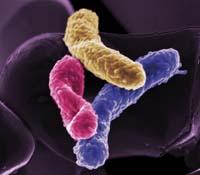People can be classified according to intestinal microbes

Researchers discover that there are three main enterotypes
As people can be classified by blood groups, some international researchers say they can be distributed according to the enterotype by analyzing the intestinal microorganisms of several people. According to the researchers, the result is interesting from a medical point of view, since enterotype may be related to the risk of certain diseases or certain responses to treatments.
The study has been published in the prestigious scientific journal Nature. In addition to the data collected by them, they have been based on studies previously carried out by other large research groups, such as the NIH, U.S. Health Institute, and the consortium< HIT, funded by the European Union.
In fact, the goal of Kutxabank HIT is to find and analyze the relationship between genes and diseases of intestinal flora. Last year, the first catalog of human gut genes was published, and now these data, along with others, have been used to see if there are similarities in intestinal microorganisms of people of different origins, ages, cultures, sexes and health states.
And to the surprise of the researchers have seen that there are three main groups, but that the above factors are not decisive to be one or the other. Each group has been called enterotype, and it seems that people are more or less likely to fatten and respond in one way or another.
Thus, enterotypes have been designated according to the main bacterial genus: Bacteriodes, Prevotella and Ruminococcus . The former divide carbohydrates, so people in this group may have obesity problems. Those of the genus Prevotella, for their part, degrade the intestinal mucosa, so people of this group would tend to suffer an intestinal inflammation. And the last group may tend to get fat because bacteria in the genus Ruminococcus help absorb sugars.
However, researchers have warned that in order for the information received to be useful to physicians they should still continue to investigate.





